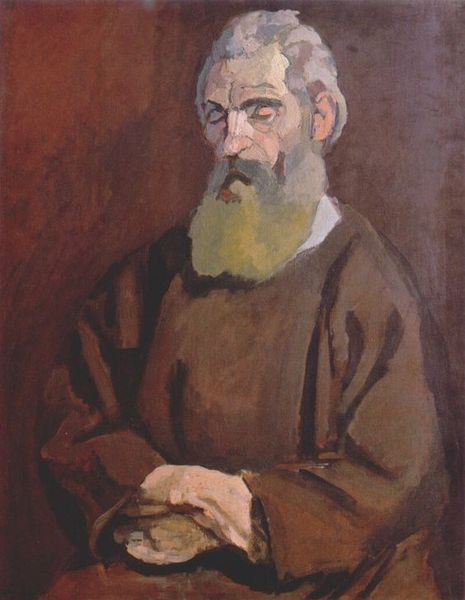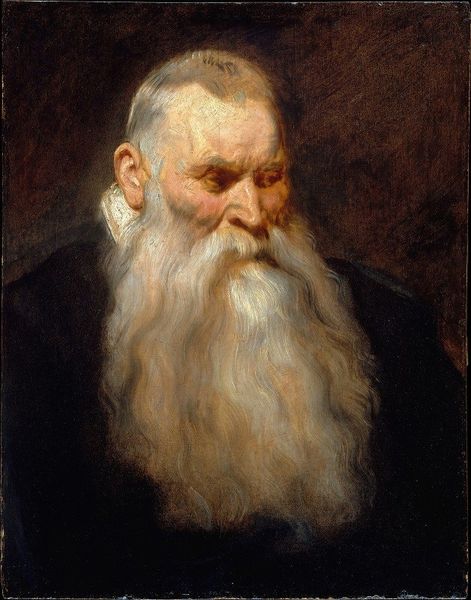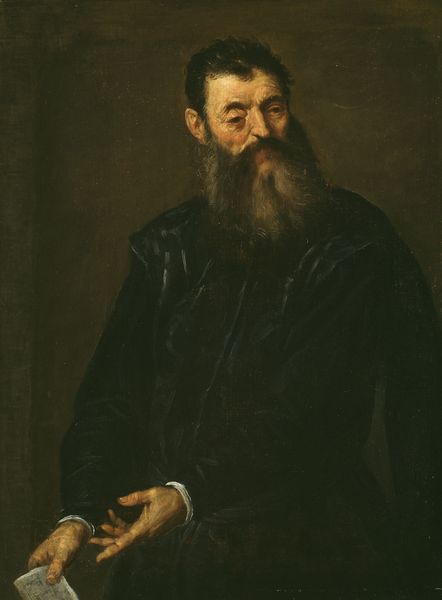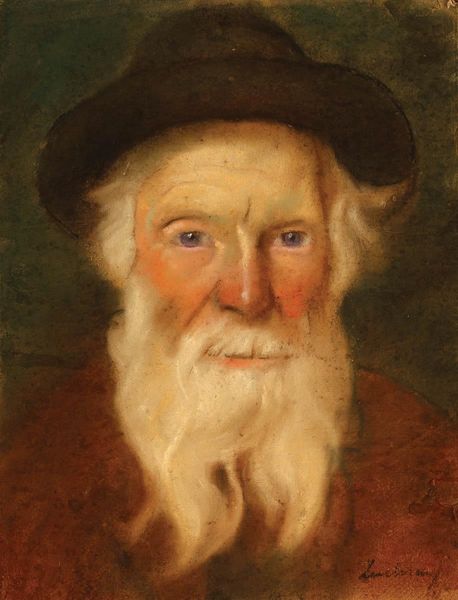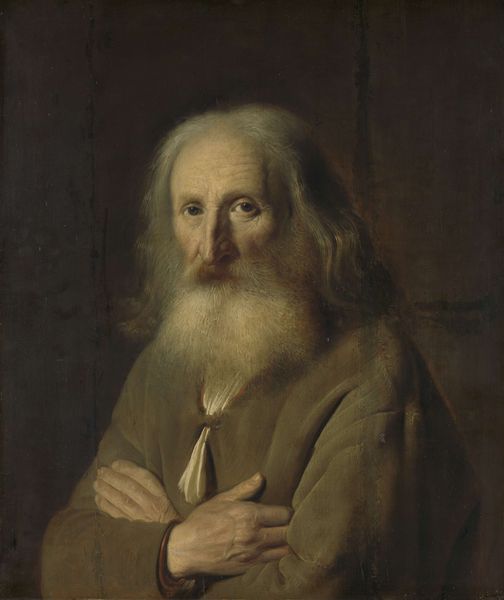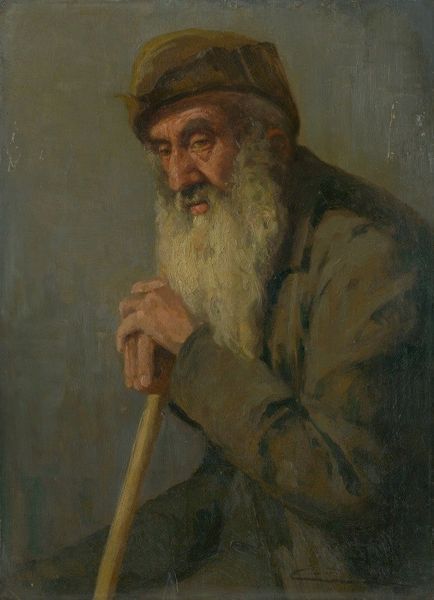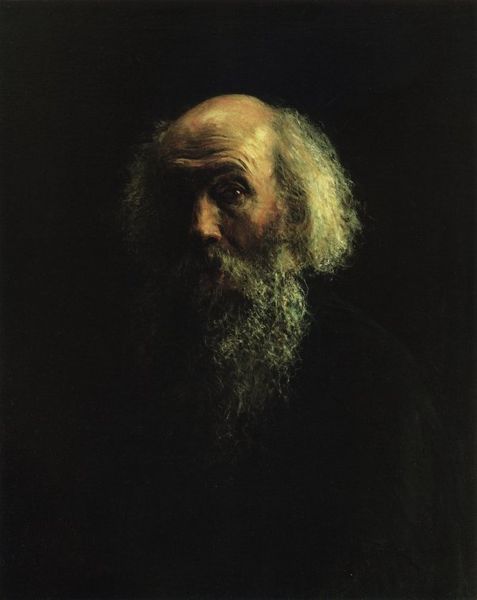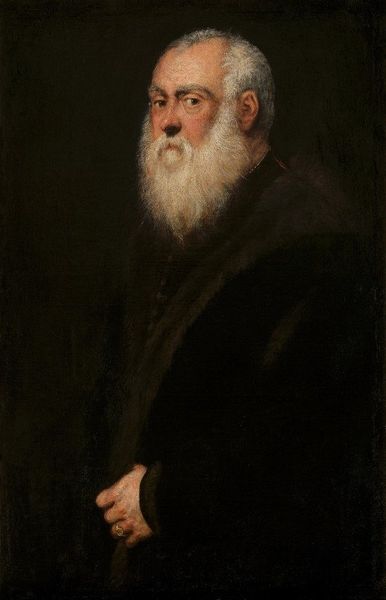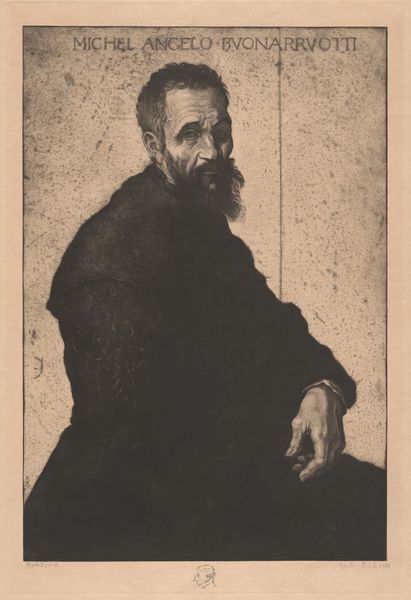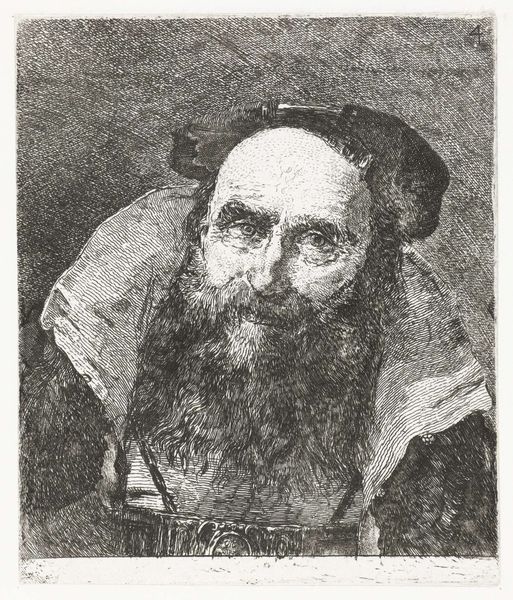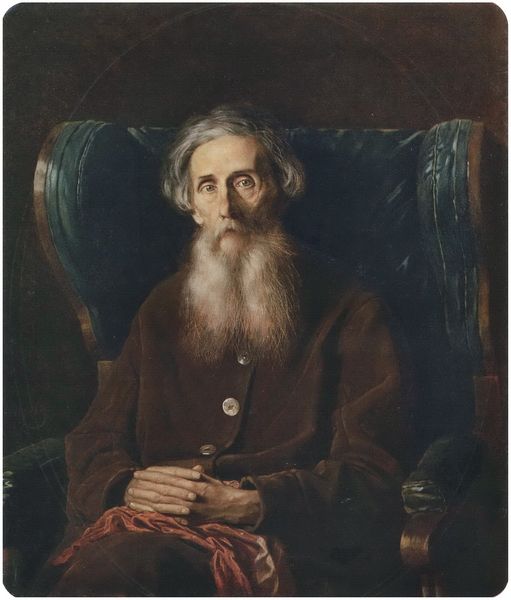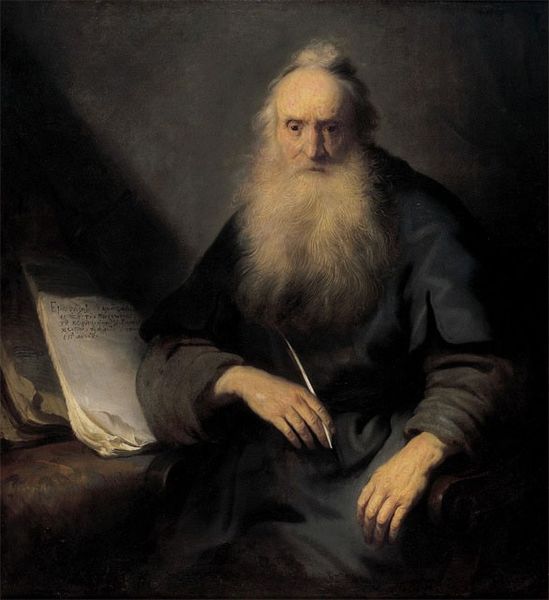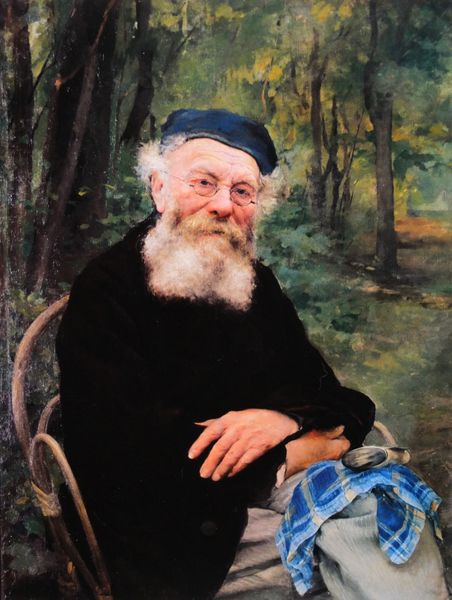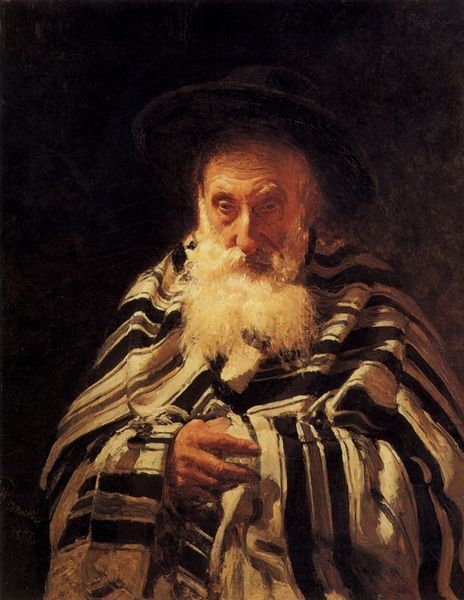
oil-paint
#
portrait
#
oil-paint
#
german-expressionism
#
oil painting
#
realism
Dimensions: 60 x 93 cm
Copyright: Public domain
Curator: This is Albin Egger-Lienz’s 1899 oil painting, "Bildnis Eines Mannes (kniestück)," or "Portrait of a Man (half-length)." He looks rather...weathered, doesn't he? Editor: Absolutely. It’s the beard that strikes me first—magnificent and unkempt at once. He has the air of someone intimately acquainted with the elements. There’s a certain stoicism in his gaze. Curator: Indeed. The artist's brushwork seems to emphasize the man's connection to a rural existence, possibly in the Alps. Consider the way the figure, with that notable walking stick, blends so effortlessly with the earthy tones in the background. This evokes labor. His clothing implies perhaps rural middle class status, perhaps through land ownership or craftsmanship, considering the style and detailing of his jacket. Editor: It feels very grounded, literally. Like his roots are entwined with the mountains themselves. His hands, resting so deliberately on that cane, are full of stories. There is almost something biblical about him. A weary prophet returning from the wilderness. Or perhaps just a bloke with a good beard and a stick. Curator: Well, consider the rising tide of German Expressionism at the time. While not quite at the forefront of the movement here, it hints at a burgeoning interest in emotional intensity and social realism, even if couched within the visual language of portraiture and traditional artistry. The application of paint lends the man a palpable sense of gravity and reality that aligns itself well within Expressionist philosophy, that there must be truth above beauty. The visible brushstrokes underscore this sense of production as well. Editor: That raw honesty is incredibly powerful, it bypasses idealization and enters into the raw material of lived experience. I’m also intrigued by how Egger-Lienz frames him. The "half-length" gives us such intimacy; you almost feel as though you're sharing a quiet moment with him in the sun. Curator: The interesting dance here for me lies in the interplay between subject and the socioeconomic context that has, clearly, produced that subject. What labour shaped the man, what landscapes, what histories reside in his weathered features? Editor: Exactly. This portrait isn't just about capturing a likeness. It's about revealing a life, a history etched onto skin and bone. Beautiful in its way, don't you think? Curator: Absolutely, that dialogue between lived experience, labor and portraiture reveals so much about artistic aims in turn of the century Austria. Editor: Well said. Makes you want to learn his life story, doesn’t it? The kind of portrait that plants questions rather than providing answers.
Comments
No comments
Be the first to comment and join the conversation on the ultimate creative platform.
